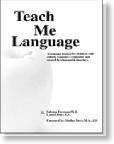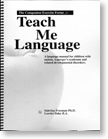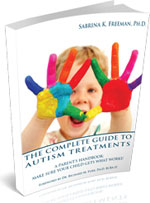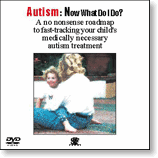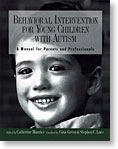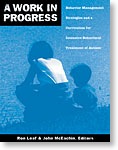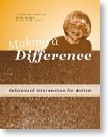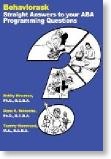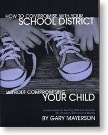quackery
Why the Canadian Government Can’t Run a Hot Dog Stand at a Baseball Game!
01/11/12 09:38 Filed in: autism | Asperger's Syndrome
The Canadian Government made an announcement today (November 8th) that is purportedly significant. On closer inspection, I don’t see anything about which to get excited.
After a bunch of lawsuits, a public relations embarrassment that lead to the creation of a national website in the early 2000s, finally with the help of a turncoat MP who sold out the entire autism community while his son received science-based treatment, the Canadian government has announced the creation of a academic chair in autism. What is the expertise of the person who is going to fill the chair? Is it someone who is on the cutting edge of treatment research? Is it a researcher who is pushing the envelope when it comes to adding to the body of knowledge in the one area that has the most data, applied behavior analysis? No.
The person whose expertise is supposedly promising that it merits an academic chair is Jonathan Weiss, Ph.D, an assistant professor at York University. The website indicates the following as areas of specialty for Weiss:
Why should we be surprised? This chair is supported by The Canadian Institutes of Health Research (CIHR). This is the Government of Canada's health research investment agency and the same folks who fought against families in the landmark Auton Case at the Supreme Court of Canada. The CIHR claims that it’s mission is to “create new scientific knowledge and to enable its translation into improved health, more effective health services and products, and a strengthened Canadian health care system.”
In fact, based on this choice for this academic Chair, one could argue that the CIHR’s true mission appears to be to make sure that academics in Canada don’t actually come up with innovative treatments because then the government would have to pay for them. Instead, they agree to have researchers who are not going to be innovative for children who really need it, but rather, study us, the parents, because that’s far easier.
After a bunch of lawsuits, a public relations embarrassment that lead to the creation of a national website in the early 2000s, finally with the help of a turncoat MP who sold out the entire autism community while his son received science-based treatment, the Canadian government has announced the creation of a academic chair in autism. What is the expertise of the person who is going to fill the chair? Is it someone who is on the cutting edge of treatment research? Is it a researcher who is pushing the envelope when it comes to adding to the body of knowledge in the one area that has the most data, applied behavior analysis? No.
The person whose expertise is supposedly promising that it merits an academic chair is Jonathan Weiss, Ph.D, an assistant professor at York University. The website indicates the following as areas of specialty for Weiss:
- Families in distress,
- Asperger's and "cognitive therapy"
- How to teach graduate students this area of expertise,
- Caregiver's perspectives when failure has occurred and the kid winds up in the hospital.
Why should we be surprised? This chair is supported by The Canadian Institutes of Health Research (CIHR). This is the Government of Canada's health research investment agency and the same folks who fought against families in the landmark Auton Case at the Supreme Court of Canada. The CIHR claims that it’s mission is to “create new scientific knowledge and to enable its translation into improved health, more effective health services and products, and a strengthened Canadian health care system.”
In fact, based on this choice for this academic Chair, one could argue that the CIHR’s true mission appears to be to make sure that academics in Canada don’t actually come up with innovative treatments because then the government would have to pay for them. Instead, they agree to have researchers who are not going to be innovative for children who really need it, but rather, study us, the parents, because that’s far easier.
When frivolous fringe autism therapies lose the humor
25/06/12 15:48 Filed in: autism | Asperger's Syndrome
Every couple of weeks I seem to find some form of quackery that is mostly humorous and harmless. Examples I’ve written about in the past that are worth a chuckle include Mushroom Supplements, Horticulture Therapy, Camel’s Milk and Surfing Therapy.
I’ve just come across another wacky autism treatment: Horse or Equine Therapy. This therapy has been claimed to “recover” a child from autism. The child’s father authored a book that was so compelling it has now been made into a feel-good, Hollywood blockbuster. Testimonials make us feel hopeful and the movie industry laps up this kind of story. What is truly miraculous is the savvy nature of the parents who managed to get their book made into an award winning movie! It takes my breath away as to how talented these parents are to actually bring a project like this to fruition.
That said, it still remains true that autism treatment quackery is harmful and unfortunate because it takes away a child’s precious window of opportunity and parents’ money from treatments that are based on science.
Quackery backed up with a book and a well-made movie is a great fundraising conduit. As you read this, there is currently a “Horse Therapy” foundation raising money to provide this – ahem – treatment to help “recover” other children with autism. If they would only spend a fraction of this money on testing their therapy for efficacy using the scientific method, that would be a great use of the money!
Aside from expensive, mostly harmless quackery, every so often I run across a dangerous idea that stops me in my tracks. I was tempted to ignore this new therapy because the more publicity it garners, the more parents may get suckered into buying this snake-oil. However, after watching the presentation of these practitioners at a “conference” recorded on youtube, I saw how sophisticated their sell job was and I could not, in good conscience, ignore this latest “therapy” any longer.
Here’s what this new therapy entails. It is called the Miracle Mineral Solution (MMS). What is it? Practitioners give enemas to the autistic child using a form of bleach! Occasionally, they also give it to the children orally. The fact that this unstudied treatment has practitioners administer a bleach concoction at either end of a child’s system alarms me greatly!
What is particularly important to note is the unbelievably persuasive talent of these practitioners. Their sale’s job is very professional, utilizing all kinds of scientific jargon to hoodwink parents to actually consider subjecting their child to this frightening procedure. If you want to get into the weeds with details describing the full horror of the procedure, I would direct you to David Gorsky’s comprehensive analysis on MMS.
What is important to remember, though, is that there is no data published in peer-reviewed journals on the Miracle Mineral Solution (MMS). The claims of recovering thirty-eight children are simply unfounded assertions with NO peer-reviewed data to support them. Remember, if there is no data, there is no evidence!
In summary, I would just remind all parents that absent solid evidence, first assume your child’s health and safety may fall victim to quackery.
I’ve just come across another wacky autism treatment: Horse or Equine Therapy. This therapy has been claimed to “recover” a child from autism. The child’s father authored a book that was so compelling it has now been made into a feel-good, Hollywood blockbuster. Testimonials make us feel hopeful and the movie industry laps up this kind of story. What is truly miraculous is the savvy nature of the parents who managed to get their book made into an award winning movie! It takes my breath away as to how talented these parents are to actually bring a project like this to fruition.
That said, it still remains true that autism treatment quackery is harmful and unfortunate because it takes away a child’s precious window of opportunity and parents’ money from treatments that are based on science.
Quackery backed up with a book and a well-made movie is a great fundraising conduit. As you read this, there is currently a “Horse Therapy” foundation raising money to provide this – ahem – treatment to help “recover” other children with autism. If they would only spend a fraction of this money on testing their therapy for efficacy using the scientific method, that would be a great use of the money!
Aside from expensive, mostly harmless quackery, every so often I run across a dangerous idea that stops me in my tracks. I was tempted to ignore this new therapy because the more publicity it garners, the more parents may get suckered into buying this snake-oil. However, after watching the presentation of these practitioners at a “conference” recorded on youtube, I saw how sophisticated their sell job was and I could not, in good conscience, ignore this latest “therapy” any longer.
Here’s what this new therapy entails. It is called the Miracle Mineral Solution (MMS). What is it? Practitioners give enemas to the autistic child using a form of bleach! Occasionally, they also give it to the children orally. The fact that this unstudied treatment has practitioners administer a bleach concoction at either end of a child’s system alarms me greatly!
What is particularly important to note is the unbelievably persuasive talent of these practitioners. Their sale’s job is very professional, utilizing all kinds of scientific jargon to hoodwink parents to actually consider subjecting their child to this frightening procedure. If you want to get into the weeds with details describing the full horror of the procedure, I would direct you to David Gorsky’s comprehensive analysis on MMS.
What is important to remember, though, is that there is no data published in peer-reviewed journals on the Miracle Mineral Solution (MMS). The claims of recovering thirty-eight children are simply unfounded assertions with NO peer-reviewed data to support them. Remember, if there is no data, there is no evidence!
In summary, I would just remind all parents that absent solid evidence, first assume your child’s health and safety may fall victim to quackery.
The Latest Academic Justification to Ration Treatment is a Doozy
06/06/12 20:41 Filed in: autism | Asperger's Syndrome
The latest article to come out about autism from California (Fountain et al, 2012) creates six developmental trajectories that characterize children with autism. Why should we care? It’s quite straightforward. The outcome of this research can be used to both justify providing treatment for children with autism and also the rationing of treatment for those children with autism who have an “intellectual disability” and are therefore deemed unworthy of scarce resources.
Here’s the summary.
Fountain and colleagues followed almost seven thousand children diagnosed with autism born in California, from 1992 through to 2001. Then they created six “trajectories” in an effort to predict how well the children will progress based on various dimensions. Although this article is full of findings that may be disturbing to parents for a variety of reasons, in my view the most dangerous findings have to do with intellectual disability and where the mother was born! The researchers found that:
“Having an intellectual disability was strongly associated with LF (Low Functioning) trajectories, as was having a foreign-born mother. Finally, children of white mothers were less likely to be LF than bloomers, as were children of Hispanic mothers (relative to nonwhites).” p. e1117
Allow me to translate: if your child at diagnosis is given an IQ test and does not score in the normal range, and/or if you are a foreign born mother, watch out! Those rationing treatment may use this article to deny your child treatment. Immigrant parents need to be particularly vigilant!
Luckily, there is one finding that can be used to argue against those rationers: The Late Bloomer. In this article, they found one group of children who are late bloomers. These children,
“… most likely to “bloom” are those without intellectual disability and those with more educated, non- minority mothers. Although we are unable to identify the specific mechanisms through which socioeconomic status affects trajectory outcomes, the intervening variables likely include home and neighborhood environments, quality and intensity of treatment, quality of education, the efficacy with which parents are able to advocate for their children with institutions providing services, and many other factors in various permutations.” p. e1118
In other words, if the child’s IQ was typical at diagnosis, and parents were better advocates with money to purchase superior treatment services, their children improved significantly.
So what do we do about the IQ tests? My view is since IQ testing is so wildly inaccurate when it comes to young children with autism, it seems criminal to seal their fate with a socially constructed test that has a decades-long history of being discriminatory in its impact.
What about minority or immigrant status of the parent? When it comes to the parent’s minority status, that’s when the discrimination becomes explicit. In short, if you smell discrimination, let this article alert you to protect yourself and your child! If you are in a minority, make sure that you find an advocate to write letters for you and attend meetings with you about your child. Keep this article in your back pocket if you suspect that your minority status is influencing the treatment or placement services of your child. When you demand equal treatment for your child, the system will be more likely to listen to you if you have evidence from a peer-reviewed journal that discrimination against children like yours has been going on for decades.
Here’s the summary.
Fountain and colleagues followed almost seven thousand children diagnosed with autism born in California, from 1992 through to 2001. Then they created six “trajectories” in an effort to predict how well the children will progress based on various dimensions. Although this article is full of findings that may be disturbing to parents for a variety of reasons, in my view the most dangerous findings have to do with intellectual disability and where the mother was born! The researchers found that:
“Having an intellectual disability was strongly associated with LF (Low Functioning) trajectories, as was having a foreign-born mother. Finally, children of white mothers were less likely to be LF than bloomers, as were children of Hispanic mothers (relative to nonwhites).” p. e1117
Allow me to translate: if your child at diagnosis is given an IQ test and does not score in the normal range, and/or if you are a foreign born mother, watch out! Those rationing treatment may use this article to deny your child treatment. Immigrant parents need to be particularly vigilant!
Luckily, there is one finding that can be used to argue against those rationers: The Late Bloomer. In this article, they found one group of children who are late bloomers. These children,
“… most likely to “bloom” are those without intellectual disability and those with more educated, non- minority mothers. Although we are unable to identify the specific mechanisms through which socioeconomic status affects trajectory outcomes, the intervening variables likely include home and neighborhood environments, quality and intensity of treatment, quality of education, the efficacy with which parents are able to advocate for their children with institutions providing services, and many other factors in various permutations.” p. e1118
In other words, if the child’s IQ was typical at diagnosis, and parents were better advocates with money to purchase superior treatment services, their children improved significantly.
So what do we do about the IQ tests? My view is since IQ testing is so wildly inaccurate when it comes to young children with autism, it seems criminal to seal their fate with a socially constructed test that has a decades-long history of being discriminatory in its impact.
What about minority or immigrant status of the parent? When it comes to the parent’s minority status, that’s when the discrimination becomes explicit. In short, if you smell discrimination, let this article alert you to protect yourself and your child! If you are in a minority, make sure that you find an advocate to write letters for you and attend meetings with you about your child. Keep this article in your back pocket if you suspect that your minority status is influencing the treatment or placement services of your child. When you demand equal treatment for your child, the system will be more likely to listen to you if you have evidence from a peer-reviewed journal that discrimination against children like yours has been going on for decades.
Magical Mushrooms Stirred for Autism
01/06/12 13:55 Filed in: autism | Asperger's Syndrome
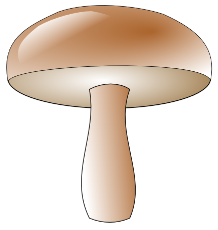
I recently read a treatise of sorts on the “nutritional, health, medicinal properties and possible behavioral effects” of a variety of mushrooms. This claim is being made by a Ph.D. who is also the owner of a mushroom farm. She argues that since mushrooms help to strengthen and stimulate the immune system, it is logical that they would be beneficial in ameliorating autism. Interesting theory. These claims have even been presented at the Autism One Conference, to further garner legitimacy for the wonder treatment. It is further claimed by a physician that White Mushrooms, “help detoxify the body and they may reduce the need for repeated behaviors.”
Who knew that all we have to do is stir fry some mushrooms and voila, our children’s stereotypic behavior will disappear!
Since it’s never a good idea to discount a theory merely because it sounds implausible, I did a search for peer-reviewed journal articles that test mushrooms as a treatment for autism. Although I did find an article discussing the theory, I did not find a single study comparing children being treated with mushrooms with a control group. No surprise, but I had to check!
In short, I’ll let you know when these mushroom purveyors provide some data. Until that time, enjoy your mushrooms in the stir fry.
When play is no fun: The junk science of play therapy for kids with autism
18/05/12 18:24 Filed in: autism | Asperger's Syndrome
It only takes a quick scan of the news to spot two new attempts to use variations of play therapy (or child-led therapy) to address the vexing condition of autism.
First, the Wall Street Journal, in its “In the Lab” section which highlights new scientific research, apparently falls victim to the same faux elixir that journalists have lapped up for the last three decades; however, this time, academic legitimacy is being used by the Kennedy Krieger Institute in its test of early intervention play groups on children who are at risk for autism.
Second, Autism Speaks is sponsoring the Toddler Treatment Network (TTN)which researches treatments that are appropriate for children under eighteen months of age. Although the TTN is involved in research, they are also attempting to get developmental interventions covered by insurance, doing so by conflating behavioral and developmental approaches. The TTN states: “But there is no hard and fast line between behavioral and developmental approaches.” This blurring between developmental and behavioral approaches further adds confusion. Many purveyors of play therapy or child-led therapy call their so-called treatments developmental. These developmental therapies suffer from a lack of evidence in terms of efficacy. This goes for Floortime, the Playschool and the SCERTS Model to name just a few child-led, parent facilitated therapies.
What is different about these latest attempts at legitimating yet a new form of play therapy is that first, the therapy is being used with children who are at risk for autism but don’t yet have the diagnosis. Second, this form of developmental therapy is creeping into mainstream academe, despite its stark lack of supporting data regarding therapeutic effectiveness.
Should we be concerned about this latest attempt to associate play and autism treatment? Yes. I would submit the following:
Three decades of research on various forms of developmental, child-led, play therapy have shown the method to be utterly ineffective as a treatment for children with autism. Recent work conducted by the Kennedy Krieger Institute or the Autism Speaks Toddler Treatment Network does not appear to have changed that fact.
First, the Wall Street Journal, in its “In the Lab” section which highlights new scientific research, apparently falls victim to the same faux elixir that journalists have lapped up for the last three decades; however, this time, academic legitimacy is being used by the Kennedy Krieger Institute in its test of early intervention play groups on children who are at risk for autism.
Second, Autism Speaks is sponsoring the Toddler Treatment Network (TTN)which researches treatments that are appropriate for children under eighteen months of age. Although the TTN is involved in research, they are also attempting to get developmental interventions covered by insurance, doing so by conflating behavioral and developmental approaches. The TTN states: “But there is no hard and fast line between behavioral and developmental approaches.” This blurring between developmental and behavioral approaches further adds confusion. Many purveyors of play therapy or child-led therapy call their so-called treatments developmental. These developmental therapies suffer from a lack of evidence in terms of efficacy. This goes for Floortime, the Playschool and the SCERTS Model to name just a few child-led, parent facilitated therapies.
What is different about these latest attempts at legitimating yet a new form of play therapy is that first, the therapy is being used with children who are at risk for autism but don’t yet have the diagnosis. Second, this form of developmental therapy is creeping into mainstream academe, despite its stark lack of supporting data regarding therapeutic effectiveness.
Should we be concerned about this latest attempt to associate play and autism treatment? Yes. I would submit the following:
- At Risk for Autism is not Autism. The Kennedy Krieger Institute conducts research on children who are between one and two years of age whom they consider to be “at risk” for autism. It is highly irregular -- and suspect -- to utilize a non-diagnosis of “at risk for autism” as the basis of research to test any autism treatment, and in this instance, a reincarnated form of play therapy. Kennedy Krieger researchers are unwittingly (perhaps) stacking the deck for a form of play therapy to register as a legitimate intervention for the condition. “At risk” for autism, is clearly not equivalent to autism!
- Even more outrageous is that the program for two year olds who have all been diagnosed with autism at the Kennedy Krieger Institute does not include best practices, which is intensive behavioral treatment; rather, these children are participating in an experimental intervention model run by a speech and language pathologist!
- The intervention model is not being tested with a control group! Are they performing comparative tests between children at risk using their form of play therapy, against children receiving best practices Behavioral Treatment for autism? No. Inexplicably, the intervention model is a form of play therapy only.
- Parents as therapists. Once again, researchers are using parents as therapists because it’s cheap! The Autism Speaks “expert” states: “One potential way to increase intervention hours is for parents to continue practice at home.” If the Autism Speaks Director of Research for Environmental Sciences had a child with autism and were to take her own advice, she would most likely have to trade her career at Autism Speaks for her new role as free parent labor for autism therapy. Only with autism do so-called experts have the temerity to suggest that parents should “treat” their own children.
- Segregation from the earliest age. We are now segregating children from their typically developing peers at age one, even before a diagnosis is made, in an attempt to “help” them.
- Proliferate a treatment with scant evidence. The Kennedy Krieger researchers have indicated their desire to transfer this “method” of autism intervention into public school settings, which will further decrease the ability of schools to succeed with children afflicted by autism.
Three decades of research on various forms of developmental, child-led, play therapy have shown the method to be utterly ineffective as a treatment for children with autism. Recent work conducted by the Kennedy Krieger Institute or the Autism Speaks Toddler Treatment Network does not appear to have changed that fact.
Don't bet the farm on this new "therapy"
14/05/12 16:42 Filed in: autism | Asperger's Syndrome
Don’t get me wrong, I’m all into children with autism having fun in a schoolyard, but I was compelled to weigh on this when I read about a specially designed playground to encourage integration.
A graduate student and professor from Kansas State University, Katie Kingery-Page, and Chelsey King, have designed a “therapeutic landscape” for children with autism that has the goal of integration, yet is designed so as not to overwhelm the child with autism. To that end, all kinds of seemingly wonderful sections of the playground have been designed. From a “music garden” to an “edible garden/greenhouse,” we now have a new addition to the tableau of autism interventions out there: “horticulture therapy.” In addition, developers of this intervention assure that the “therapeutic landscape “ provides lots of places to hide if the child with autism gets overwhelmed. This new intervention method is said to be designed for “building sensory experience and communication.” What a utopian landscape!
For a moment, let’s ignore the fact that there is absolutely no evidence from peer-reviewed journals to support the notion that horticulture therapy is effective in ameliorating any symptoms of autism. Let’s consider that there are two very important things missing from this seemingly idyllic wonderland, if children with autism are going to be truly accommodated in the novel protocol:
Here’s the main point: if you want successful integration, the number one issue is individual child safety. For some reason, educational systems can’t seem to figure this out. They understand the importance of creating segregated sites that are like fortresses; however, the minute there is integration, the safety issue is ignored!
I suggest that these designers go back to their utopian design and look at it with new eyes. Once every safety issue is addressed, and they lose the term “therapy” to justify their design, I’m all for creating a fun place for children and their typically developing peers to interact.
A graduate student and professor from Kansas State University, Katie Kingery-Page, and Chelsey King, have designed a “therapeutic landscape” for children with autism that has the goal of integration, yet is designed so as not to overwhelm the child with autism. To that end, all kinds of seemingly wonderful sections of the playground have been designed. From a “music garden” to an “edible garden/greenhouse,” we now have a new addition to the tableau of autism interventions out there: “horticulture therapy.” In addition, developers of this intervention assure that the “therapeutic landscape “ provides lots of places to hide if the child with autism gets overwhelmed. This new intervention method is said to be designed for “building sensory experience and communication.” What a utopian landscape!
For a moment, let’s ignore the fact that there is absolutely no evidence from peer-reviewed journals to support the notion that horticulture therapy is effective in ameliorating any symptoms of autism. Let’s consider that there are two very important things missing from this seemingly idyllic wonderland, if children with autism are going to be truly accommodated in the novel protocol:
- there must be no way for a child with autism to enter or leave the space without an adult being present to allow the entry or exit,
- every single inch of that playground needs to be monitored from one area, so that there are no hidden alcoves from supervising adults. It is on the playground where safety issues are paramount! Often this is when children with autism wander off and are bullied, or worse.
Here’s the main point: if you want successful integration, the number one issue is individual child safety. For some reason, educational systems can’t seem to figure this out. They understand the importance of creating segregated sites that are like fortresses; however, the minute there is integration, the safety issue is ignored!
I suggest that these designers go back to their utopian design and look at it with new eyes. Once every safety issue is addressed, and they lose the term “therapy” to justify their design, I’m all for creating a fun place for children and their typically developing peers to interact.
Does Floortime Therapy Work? We're still waiting for the evidence.
16/04/12 15:42 Filed in: autism | Asperger's Syndrome
I’ve been reading about Floortime/DIR Autism Therapy for the last twenty years and have also written about this topic at length before. The theory behind this form of “play” therapy always sounded compelling because it appears to mesh well with a very nurturant style of child-rearing. Unfortunately, during the last two decades, there has been very little in the way of scientific testing to support the purported efficacy of this method. Although there have been many dozens of uncontrolled studies, Floortime Therapy has never been subjected to the rigor of science, much to the frustration of adherents to the scientific method.
Finally, in 2011, there was an attempt to add scientific rigor to the testing of Floortime autism treatment. Recently, the Canadian Broadcasting Corporation (CBC) showcased Floortime Therapy and the purported science supporting the therapy.
I watched with great interest as a professor from York University was interviewed regarding this so-called “break through” in autism treatment. I took down the name of the researcher and started to look for the peer-reviewed journal article created by this researcher from a legitimate university. I couldn’t find a 2012 study, so I wrote to the research center and they kindly sent me the latest article, which was actually a 2011 article that I had already read. In the 2011 study I received, there was no report of the brain scans that were highlighted in the CBC news clip. When I contacted the research center, I was told that the information on the brain scans had not yet been published.
Since there has been so much publicity regarding this latest article, I’ve decided to present a short analysis on the 2011 Floortime study conducted by Casenhiser, Shanker and Stieben.
The article’s strengths:
The article’s weaknesses as described by the researchers involved in the study:
Additional Weaknesses:
The central weakness of the 2011 study:
Bottom Line: Based on the studies that have been conducted to this point on Floortime, there is no evidence to suggest that Floortime is an effective treatment for autism.
We eagerly await the solid evidence!
Finally, in 2011, there was an attempt to add scientific rigor to the testing of Floortime autism treatment. Recently, the Canadian Broadcasting Corporation (CBC) showcased Floortime Therapy and the purported science supporting the therapy.
I watched with great interest as a professor from York University was interviewed regarding this so-called “break through” in autism treatment. I took down the name of the researcher and started to look for the peer-reviewed journal article created by this researcher from a legitimate university. I couldn’t find a 2012 study, so I wrote to the research center and they kindly sent me the latest article, which was actually a 2011 article that I had already read. In the 2011 study I received, there was no report of the brain scans that were highlighted in the CBC news clip. When I contacted the research center, I was told that the information on the brain scans had not yet been published.
Since there has been so much publicity regarding this latest article, I’ve decided to present a short analysis on the 2011 Floortime study conducted by Casenhiser, Shanker and Stieben.
The article’s strengths:
- They recruit fifty-one children for their study, which is a relatively large number in autism research.
- There are two groups of children (an experimental and control group).
- They attempt to randomly assign children so that both groups would be similar prior to the treatment being administered.
- The authors very honestly describe the limitations of the study, instead of attempting to hide them (which is so often the case in autism treatment research).
The article’s weaknesses as described by the researchers involved in the study:
- The control group receives a large number of different treatments in a completely uncontrolled fashion.
- The experimental group receives more hours of treatment than the control group (which is, in my view, a fatal flaw since the variable “intensity” is not controlled).
- There is no I.Q. testing conducted prior to and after the study. I define this as a major flaw since it is crucial to understand whether or not treatment would affect the cognitive skills of a child with a developmental delay or disorder.
- There is a severe self-selection bias, not only regarding which families sign up for the study but more importantly, which children drop out of the study to gain access to a 20-30 hour a week government program (13 children from the control group and 9 children from the experimental group). Even the authors understand how problematic this is when they state: “The authors, therefore, caution against drawing the conclusion that a 20 hours per week program (such as the Intensive Behavioral Intervention program funded by the government of Ontario) can be easily replaced with a 2 hours per week program without regard for how well the requirements of the program fit the needs and resources of each family)” p. 18
Additional Weaknesses:
- The researchers in the Learning Through Interaction in Children with Autism 2011 study use the wrong control group; they need to compare Floortime with a control group that is receiving what is considered “best practices” for autism, which is currently Intensive Behavioral Treatment.
- In this study, children were not diagnosed with autism by a specific psychologist with expertise in autism. Researchers rely on diagnoses made prior to the study from a heterogeneous group of clinicians. This is a severe flaw because we do not know the quality and accuracy of those diagnoses. Since autism is a spectrum disorder, one clinician’s Asperger Syndrome diagnosis may be equal to another clinician’s Autism diagnosis.
- Tools used to measure improvements in the study were developed by the original proponents of the therapy. Using subjective measures to indicate whether a treatment is successful is forbidden in science. The tools used to discern improvement must be independently developed and tested prior to their use in an experiment. There was only one objective measure developed from the field of Speech and Language Pathology. There must be more objective measures in general, and from the area of Speech and Language specifically (and even this one objective measure did not yield a difference between the experimental and control group).
The central weakness of the 2011 study:
- Due to an attrition rate of 43% of the children from the study, we have no way of knowing whether the more severe children left the study to be provided Intensive Behavioral Treatment. It has been my observation over the years that parents of children whose autism is more severe tend to gravitate towards programs that are highly behavioral in nature, since such programs tend to provide better results more quickly. Did the abandonment of the Floortime study by these parents result in a biased group of mildly affected children remaining in the Floortime study? We don’t know; however, we do know that this study has so many limitations that it provides no evidence whatsoever that Floortime Therapy is effective. The fact that almost half of the subjects at the beginning of the study were not there at the end, should disqualify the entire effort for any serious scientist or public policy official.
Bottom Line: Based on the studies that have been conducted to this point on Floortime, there is no evidence to suggest that Floortime is an effective treatment for autism.
We eagerly await the solid evidence!
An Autism Treatment Mirage Arrives from the Desert
11/04/12 13:03 Filed in: autism | Asperger's Syndrome

Here’s the justification given for using camel’s milk to treat autism: There is a theory that autism may be caused by some type of inflammation. Camel’s milk is thought, by some, to have an ameliorative effect for symptoms of autism by reducing inflammation. So why not give camel’s milk to children with autism?
Here’s why:
1) There are no controlled studies published in peer-reviewed journals that support camel’s milk as a treatment for autism.
2) Camel’s milk can be dangerous due to the fact that:
- the milk is raw.
- it comes from animals that can harbor TB and E-coli.
- milking techniques are often unhygienic.
- it’s difficult to get milk to market safely due to lack of refrigeration in areas where most people raise camels, i.e., from desert nomads.
3) This so-called treatment has very compelling testimonials given by highly motivated parents, supported by purveyors of camel’s milk who don’t seem to be disturbed about the lack of science behind this purported treatment. Uncontrolled parental observations of their children’s behavior after having been given camel’s milk, is all there is to support parents’ belief that camel milk is improving their children’s symptoms of autism.
Does camel’s milk treat what ails kids with autism? Who knows, but until there is some science-based evidence as to measurable benefit, we need to categorize this latest theory as untested at best, and potentially dangerous at worst.
The proponents of camel’s milk (and there are a few) need to show us the data that supports their claims of efficacy. Until such time, Camel’s Milk Treatment remains filed under quackery.
Your Child’s Autism is Not a Theory!
02/03/12 09:30 Filed in: autism | Asperger's Syndrome
TV3 Ireland AM recently interviewed an autism “expert,” a clinical psychologist, Tony Humphreys, who made a comment about autism, saying the disorder is “a theory.” So now your kid’s a theory. How about that? Chalk this up to another misunderstanding into which a naïve, clinical psychologist fell! Will these professionals ever learn that parents of children with autism are a prickly bunch? Understandably, parents are outraged at his comments. It is hard enough living with a child with autism, fighting for that child’s rights to treatment and education, and bankrupting the family for the child’s treatment. What’s impossible to then bear is for some so-called expert to come along and deny your child’s debilitating condition by calling it a theory!
It also doesn’t help that this psychologist’s case dredges up the “lack of love” angle as a cause of autism (which reminds us all of the infamous Refrigerator Mother Theory, the less well-known Detached Father Theory and finally, the sophisticated Assortative Mating Theory). Despite this debacle, which was sufficiently controversial that the Irish Examiner actually pulled the article, a couple of points do need to be made.
Autism is definitely real; however, the causes of autism are not yet well known. Much good research is being conducted and many theories as to the causes of autism are being researched. Unfortunately, we do not yet know how to measure autism biologically. We can neither count blood cells nor measure proteins to determine whether or not a child has autism. The diagnoses are always behavioral, which is not adequate, but that’s all we currently have. One day, though, we will actually know the causes of autism. In the same way we know “fever” is a symptom of underlying disease rather than a diagnosis on its own, autism may similarly be a symptom of one or more conditions.
For parents of children with autism, this difference may be no more than semantics, despite the fact that researchers will be gratified after years of research. The term autism may eventually come to describe a group of symptoms, but when your child needs help, does it really matter? Let the Irish Examiner experience be a cautionary tale for the next autism expert who wades into autism’s very deep waters.
It also doesn’t help that this psychologist’s case dredges up the “lack of love” angle as a cause of autism (which reminds us all of the infamous Refrigerator Mother Theory, the less well-known Detached Father Theory and finally, the sophisticated Assortative Mating Theory). Despite this debacle, which was sufficiently controversial that the Irish Examiner actually pulled the article, a couple of points do need to be made.
Autism is definitely real; however, the causes of autism are not yet well known. Much good research is being conducted and many theories as to the causes of autism are being researched. Unfortunately, we do not yet know how to measure autism biologically. We can neither count blood cells nor measure proteins to determine whether or not a child has autism. The diagnoses are always behavioral, which is not adequate, but that’s all we currently have. One day, though, we will actually know the causes of autism. In the same way we know “fever” is a symptom of underlying disease rather than a diagnosis on its own, autism may similarly be a symptom of one or more conditions.
For parents of children with autism, this difference may be no more than semantics, despite the fact that researchers will be gratified after years of research. The term autism may eventually come to describe a group of symptoms, but when your child needs help, does it really matter? Let the Irish Examiner experience be a cautionary tale for the next autism expert who wades into autism’s very deep waters.
Oxytocin and Autism: add another theory with no data to the talley
23/01/12 16:34 Filed in: autism | Asperger's Syndrome
Another day and seemingly another opportunity to experiment on children with autism.
Legitimate researchers, conducting a variety of human & primate studies, have reported that those with higher levels of the hormone oxytocin exhibit more affection and pro-social behavior than those with lower levels of the hormone.
From these findings, the article in the Daily Mail, quotes a researcher who suggests: ”oxytocin breaks down normal social barriers.” The headline of this article states: “’Cuddle hormone’ which makes mothers kinder could help treat autism.”
Here’s where the trouble begins! I have nightmarish visions of parents paying money to a fly-by-night clinic to administer the hormone oxytocin to their children in much the same way as parents are flying to Panama to shoot their children up with stem cells! The key here is to wait! Research needs to be conducted, published and replicated on children with autism before we start widely administering oxytocin to kids. Let’s try not to have a replay of the secretin debacle!
Legitimate researchers, conducting a variety of human & primate studies, have reported that those with higher levels of the hormone oxytocin exhibit more affection and pro-social behavior than those with lower levels of the hormone.
From these findings, the article in the Daily Mail, quotes a researcher who suggests: ”oxytocin breaks down normal social barriers.” The headline of this article states: “’Cuddle hormone’ which makes mothers kinder could help treat autism.”
Here’s where the trouble begins! I have nightmarish visions of parents paying money to a fly-by-night clinic to administer the hormone oxytocin to their children in much the same way as parents are flying to Panama to shoot their children up with stem cells! The key here is to wait! Research needs to be conducted, published and replicated on children with autism before we start widely administering oxytocin to kids. Let’s try not to have a replay of the secretin debacle!
Autism Speaks should pause to listen, for just a moment
09/11/11 10:51 Filed in: autism | Asperger's Syndrome
Parents have a very difficult time negotiating the world of autism treatments. Everyone is out there offering the latest treatment for the disability of autism. This is nothing new, and until there is actually a cure for autism, various forms of autism snake oil will continue to be sold through the unreliable, age old testimonial.
What’s different now is that the researchers have upped the ante. They now have a well-funded, well-heeled autism organization provide legitimacy to propagate autism treatment myth. The organization I’m referring to is Autism Speaks.
The last thing we need is for Autism Speaks, and the scientists who work under their umbrella, to be associated in any way with autism treatment quackery. Today, there was yet another feel good testimonial on the Autism Speaks Official Blog espousing the virtues of Floortime. This testimonial is the product of training from a $15,000 grant provided by Autism Speaks!
I’m floored! Here are researchers, using a technique with no scientific evidence, receiving big money to train an army of therapists, teachers and respite providers across twenty-two states. Now the first kids to graduate from this program are being presented as success stories.
I’d like Autism Speaks to listen, for just a moment:
Prior to giving money to train people in a technique that has no scientific evidence, it is incumbent upon Autism Speaks to support well-designed research into the experimental treatment known as Floortime, to discern whether or not the treatment actually improves the condition of autism as compared to other treatments that are currently considered best practices.
I would like to say this to Dr. Geraldine Dawson, Chief Science Officer, Autism Speaks: you should know better! It does no service for children with autism, and the parents who advocate for them, for a leading autism organization to misinform about the efficacy of treatments; yet this is exactly what Autism Speaks is doing in this instance. By promoting and propagating quackery, Autism Speaks dilutes its legitimacy. In my view, this is shameful. Autism Speaks has enormous potential to change the lives of children with autism, if only they were to use that power responsibly.
What’s different now is that the researchers have upped the ante. They now have a well-funded, well-heeled autism organization provide legitimacy to propagate autism treatment myth. The organization I’m referring to is Autism Speaks.
The last thing we need is for Autism Speaks, and the scientists who work under their umbrella, to be associated in any way with autism treatment quackery. Today, there was yet another feel good testimonial on the Autism Speaks Official Blog espousing the virtues of Floortime. This testimonial is the product of training from a $15,000 grant provided by Autism Speaks!
I’m floored! Here are researchers, using a technique with no scientific evidence, receiving big money to train an army of therapists, teachers and respite providers across twenty-two states. Now the first kids to graduate from this program are being presented as success stories.
I’d like Autism Speaks to listen, for just a moment:
Prior to giving money to train people in a technique that has no scientific evidence, it is incumbent upon Autism Speaks to support well-designed research into the experimental treatment known as Floortime, to discern whether or not the treatment actually improves the condition of autism as compared to other treatments that are currently considered best practices.
I would like to say this to Dr. Geraldine Dawson, Chief Science Officer, Autism Speaks: you should know better! It does no service for children with autism, and the parents who advocate for them, for a leading autism organization to misinform about the efficacy of treatments; yet this is exactly what Autism Speaks is doing in this instance. By promoting and propagating quackery, Autism Speaks dilutes its legitimacy. In my view, this is shameful. Autism Speaks has enormous potential to change the lives of children with autism, if only they were to use that power responsibly.
Refrigerator Moms Obsolete When Hell Freezes Over
11/10/11 19:39 Filed in: autism | Asperger's Syndrome
In every generation there seems to be yet another so-called expert that blames mothers for autism. The new theory is generally a variant of the same old recycled theory that blames poor ole mom. Read more...
The flavor of the month is calcium
04/10/11 10:05 Filed in: autism | Asperger's Syndrome
With

We're Aware Already: Part Two
01/09/11 08:20 Filed in: autism | Asperger's Syndrome
After my first “We’re Aware Already!” post, I was sent a link from a reader letting me know that I was not the first person to have this reaction. In fact, the post I received is so “on the money,” that I received permission to repost, and here it is in its entirety. I should mention that the Association for Science in Autism Treatment is a very worthwhile group with a great newsletter. Subscribe for free: Click here to signup. Read more...
Riding the wave of quackery!
25/08/11 18:27 Filed in: autism | Asperger's Syndrome
Surf's up, folks! Until recently, sunblock was only required for one form of autism treatment quackery: swimming with dolphins. Now there is yet another reason to slather up your child: Surfing Therapy! Yup, you read that correctly. Surfing Therapy… Read more...


